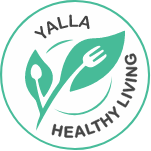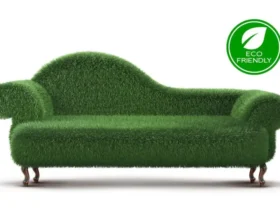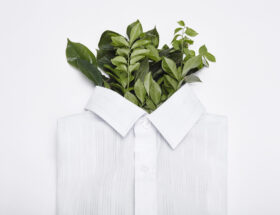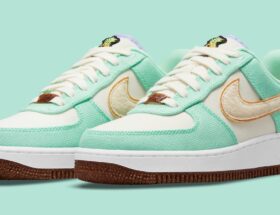How to live a sustainable lifestyle?
There are many, many ways to do this, across every industry, every issue and everything you normally buy, use or throw away.
You don’t have to make a massive shift with everything you do or buy, all at once (and certainly don’t throw out good stuff for more ‘sustainable’ versions).
To live a more sustainable life, it takes a lifestyle change rather than a crash diet style approach.
Being more sustainable isn’t an easily achieved goal you can tick off and the move onto the next thing on your list – it’s a lifelong journey, of learning, experimenting, failing, starting again and sharing your adventure.
The destination may be important for us all to aim for, but the journey – no matter how slow or fast, is the thing that counts.
So are you ready?
How To Live A Sustainable Lifestyle
A ‘sustainable lifestyle’ can be broken down into many actions, but these are the top 12 areas you should be looking to work on
- Reduce your consumption
- Stop buying fast fashion
- Support local businesses
- Buy organic
- Buy less, buy better
- Make, mend, sew and share
- Learn about the issues you care about
- Reduce your waste
- Eat less dairy and meat
- Travel more lightly
- Offset your emissions
- Keep trying
There is no one big action, but your everyday smaller actions all add up to being more sustainable – often with surprising results.
This feature is a bit of a catch all, how to live a sustainable lifestyle 101 – with lots of ideas and links to follow up on the big ideas if you’re keen, from other features and interviews I’ve done on pebble over the last three years.
There’s no shortage of expertise or help out there amongst the content we share.
If you want more tips and advice on particular issues, our friendly Facebook group, the pebble pod, is packed full of experts in everything eco – from teaching you how to darn a hole in a sock, to people who can advise on how to reduce your emissions at work. Get involved, come and join and get some top level advice.

1. Reduce your consumption
This is a huge overarching goal. We are consumers, every one of us, but our constant overconsumption of everything from printers we throw away rather than fix, to wear once fast fashion is wrecking our only home. It’s not totally our fault, it’s what we’ve been lead to believe adds up to a happy, successful life, but it’s something more and more of us are realising isn’t right.
The world is drowning in our ‘consumed’ items, from nappies to plastic straws and if you want to be more sustainable – then looking at everything you buy as an eco-friendly decision is an important mindset shift.
You work hard for your money, spend it wisely with brands and services that care about nature and the planet, rather than ones that pile up goods and sell them cheap.
Stopping and questioning what you need – and why you need it, and looking at other alternatives than just going out and buying it straight from Amazon – is the first big step to being more sustainable – and you’ll be surprised how powerful it is. Hey, it often saves you money too.
Tara Button has some great advice on reducing how much you shop.
Or check this feature out on ‘frugal hedonism’ (or having a great time with what you’ve got).
Don’t forget: The most sustainable thing is something you already own.

2. Stop buying fast fashion
Seriously guys, there is no need to buy fast fashion.
Did you know that each person in the UK buys an estimated 26.7kg of new clothing every year?
We also, in the UK, throw away £140 million worth of clothing each year.
Our fast fashion addiction has doubled in the last 15 years and with over 100 billion bits of clothing produced each year – we are literally drowing in clothes.
Plus those cheap clothes are made using toxic processes. There is plastic in 60% of all new clothing – so they don’t break down in landfill. Your holiday Tshirt will still be in one piece in landfill long after you’re dead.
What Are Microplastics And Why Are They Harmful?
Then there’s the human rights issues, the air pollution, the carbon emissions (every year, global emissions from textile production are equivalent to 1.2 billion tonnes of CO2), the air miles, the burning of unsold clothing and that incessant, unnecessary push for you to buy more and more and more.
What’s Wrong With Fast Fashion? Our 5 Min Guide Will Catch You Up
Want some ethical fashion ideas instead?
What Makes A Fashion Brand Ethical? Here’s Everything You Need To Consider
The Best Ethical Clothing Brands – 20 for 2020
Download Our A-Z Guide to Ethical Fashion
How to (successfully) shop for vintage

3. Support local businesses
This is a massive step to havig a more sustainable lifestyle, but it often gets overlooked. Being more sustainable doesn’t mean not buying anything ever again. Smaller, independent and local businesses are often more sustainable than the global corporations, so supporting them with your money is an important way of being more green.
Investigate the brands you often spend with.
- Do they have a give back or charity partner?
- Do they offset their emissions?
- Are they a social enterprise?
- Do they have an environmental purpose?
These are all simple checks you can do to make sure your money is working hard for the planet.
Local businesses have the added value of keeping money in your local economy and you know you’re supporting real people who are often passionate about their idustry, skill or product.
Zero waste shops are brilliant examples of sustainable, local businesses and have become hubs for lots of sustainable knowledge and expertise in their communitities.
Plastic Free Shopping: 102 Of The UK’s Best Zero Waste Stores
Here on pebble we support a huge range of local and sustainable SMEs through our weekly LUST LIST (on our excellent, positive and thoughtful weekly newsletter) and our Facebook group has become a hub for people to share and shout about their favourite local eco business.
Our fast fashion addiction has doubled in the last 15 years and with over 100 billion bits of clothing produced each year – we are literally drowing in clothes
4. Buy organic
Why buy organic? What difference does it really make? It’s not just the indivduual bar of chocolate or carrots that you choose to buy organic – it’s about valuing the farming system that produced the food you love.
If you think your food should be nutrious, shouldn’t leave the world in a worse place, should treat workers, farmers and factory workers properly, if you respect animal rights, then actually placing a value on that food, aside from the cheap price assigned by the supermarket, then think about buying organic as much as you can.
Organic simply means no chemical fertilisers, no antibiotics and no GM, with animals fed organic food and there’s an emphasis on their welfare. Want to know more?
10 Reasons To Go Organic. This is from last September (Organic September) but each of the reasons applies all year round.
Confused about all the labels on food and what they all mean? Here’s our guide to what organic, Fairtrade and the other labels mean.
Let’s get dirty: 3 reasons why soil health matters

5. Buy less, buy better
This really is a mindset change, rather than a quick swap but once you’re in the sustainable groove, it definitely becomes addictive and you’ll feel better about the things you do buy!
We know not buying anything isn’t possible, or even the best course of action as we need more sustainable businesses and products, but thinking carefully about the quality and provenance of everything you’re buying really does make a difference.
To be more sustainable you want to make your stuff last as long as possible, to keep it out of landfill, so you have to replace it less and therefore less needs to be produced in the supply chain.
Every product in your house has a manufacturing carbon footprint and it will end up as waste. It had a life before and after your house, so it’s time to think beyond the bin.
- Can you choose products that can be easily mended or have parts replaced?
- Choose products that have been upcycled from other materials or items?
- Can you choose a recycled version of a new product?
- Make sure what you buy can be recycled?
- Choose materials that won’t break – so a metal colendar over a plastic one for instance. Where you can avoid plastic all together.
Every product in your house has a manufacturing carbon footprint and it will end up as waste. It has a life before and after your house, so it’s time to think beyond the bin
6. Make, mend, sew and share
This really is the other side of the buy less, buy better mentality.
If you want to have a more sustainable lifestyle, then some of that comes down to keeping your posessions, clothes and everything else in circulation longer and valuing them more.
Recycling is the last resort here – much of our recycling doesn’t actually get recycled, and it’s a tiny percentage overall of everything we chuck out.
Plus it’s good for your mental health!
Why Sewing And Mending Your Clothes Is Good For The Soul
Here’s how you can get started, even if you can’t even sew on a button.
5 Simple Ways To Make Your Clothes Last Longer
The sharing economy isn’t just for Uber either.
From clothing rental companies to start ups who are sharing toys, kids’ clothes and Libraries of Things where you can borrow items you don’t need all the time (hello paint stripper machine or disco lights), we’re moving beyond needing to own everything.
This more collaborative approach means simply, less stuff needs to be produced (saving CO2 emissions) and less ends up thrown away.

7. Learn more about the issues you care about
When we’re talking about being more sustainable, that can cover SO many issues – from the fashion industry to industrial farming, permaculture to pioneering bio-tech, so often the first step is actually forgetting about the broad brush of ‘sustainability’ and work out which issues resonate more with you. It could include
- Going plant based and swapping to vegan skincare and clothing
- Animal rights and the industrial farming system
- Deforestation and our loss of biodiversity
- Getting rid of plastic in our rivers, seas and oceans
- Reducing the number of chemicals we use in our clothing, skincare and food
- Tackling waste or recycling
- Creating more green spaces in your local area
Use your favourite issue to guide the things you buy, eat, drink and where you shop.
We call this ‘shopping your values’. If a brand, outlet or service doesn’t share your passions and concerns, find someone who does.
10 books that have rocked our world this year – and will change yours

8. Reduce your waste
Now this is another big step on the journey to adopting a more sustainable lifestyle.
From plastic to food waste, what we throw away is causing huge problems for the planet – plus everything thrown away is a waste of resources, emissions, materials, time and money. It’s the other half of reducing your consumption.
Most of us think of buying something new, using it and then throwing it away as a straight line – whereas for us to use less of our planet’s finite resources we need to be thinking circularlly. This is the circular economy that you might have heard about – using waste products to make new things – and reducing a need for the bin at all.
Reducing your single use plastic waste and your food waste are two massive steps to take to being more sustainable – and will save you money!
Single use plastic waste
Single use plastic is more than just plastic straws and coffee cups, what about your shampoo bottle, packages that come with bubble wrap, chocolate and crisp wrappers? Most single use plastic is not recycled (even if it says it can be) and is either burnt or sent to landfill.
Everyday Plastic has a great weekly plastic waste audit for households to follow to work out what you throw away, and you can work out how to reduce it and swap to non plastic alternatives.
These plastic free features should give you some good ideas of where to start as well.
Ditch the disposables: 9 ways to create a plastic free bathroom
Put the kettle on: Your 5 minute guide to plastic free tea
Trying to go zero waste? Here are 10 plastic free online shops you’ll love
5 simple plastic-free switches to Beat Plastic Pollution
Food waste
The average household spends just under £500 a year on food that goes straight in the bin.
Want to tackle your food waste?
Fill bellies not bins: Famous British chefs share their secret food waste tips
7 easy ways to reduce your food waste
And growing more of your own food, reduces food waste (as you’re less likely to throw that wonky cucumber away after you’ve grown it) and reduces your single use plastic footprint – and there are no food miles, and it’s good for you mental health!
Zero waste
While zero waste as a concept is pretty laudable, it’s incredibly hard to achieve in real life – when you’ve got pressures of kids, working from home, parents and so on. Use the idea of reducing your waste, or low waste, as something you want to aim for – most people when they say ‘zero waste’ mean this anyway.
No business can be 100% zero waste but you can send zero waste to landfill.
Here’s a handy guide we wrote last year.
Zero Waste Beginner’s Guide: 21 Easy Ways To Change At Home

9. Eat less dairy and meat
Whether you decide to go full vegan, or just want to eat more plant based meals, reducing your intake of dairy and meat goes a long way towards a more sustainable lifestyle.
The stats are frightening.
- 4% of the world’s greenhouse gases come from dairy farming (there are around 1 billion cows in the world)
- Dairy cows have short, miserable lives, are often kept in sheds and mistreated
- Dairy farming is one of the biggest sources of water pollution in the UK
- Nearly 60% of the world’s agricultural land is used for beef production
- Animal agriculture needs more land, resources and energy than crops do
- One-third of the world’s grain is used to feed our animal livestock
- Globally, we eat around 50 billion chickens each year
There are a lot more insights and stats on this post by Eco Warrior Princess.
But it’s worth remembering that not all meat and dairy is created equally. Organic and/or sustainable farms or local producers who look after their animals, are often a more sustainable choice than buying an avocado wrapped in plastic that’s been flown in from Mexico.
What you want to avoid is buying products from the global industrial farming industry that have a terrible impact on animal welfare, deforestation, biodiversity loss and soil degradation.
What’s Your Carbon Footprint? Dine Differently For The Planet
While it’s understandable to want an easy swap solution (ie just eat plants), we have to be more responsible than that – there are no easy solutions in trying to be more sustainable. Everything you eat or drink has a carbon footprint and an impact, so it’s worth looking at your favourite foods / snacks / guilty pleasures and making sure you really helping when you think you’ve made the green choice.
For instance, almond milk is great because it’s non dairy, right? Wrong! Massive almond farms are killing off many of the US’s bee populations who are used to polliate each almond and the farms are almost all in California, where they use enormous amounts of water – in a state that’s almost always in drought. It doesn’t make any sense.
Get some plant based recipe inspo below…
5 Best Vegan Cookbooks To Fill 2020 With Plant Based Recipes
7 vegan cookbooks that will make you fall in love with plants
5 Delicious and Seasonal Vegan Dinner Recipes

10. Travel more lightly
While we are all rethinking our travel habits this year, it’s time to think about how your new sustainable lifestyle expands to travel. Being more sustainable when it comes to going on holiday, can take various forms.
- Avoid flying – which is one of the most carbon intensive things you can do. A return flight to New York produces more carbon emissions per person than some people in developing countries get through in a year.
- Embrace slow travel – from taking the train to getting on your bike – take pleasure in not rushing, not doing short haul trips for the ‘gram and enjoying the landscape from a different angle.
- Choose independent or local accomodation, tours, experiences and so on – make sure your hard earned holiday money works hard to support the people who are showing you a good time.
- Donate or give back to conservation or community projects or support travel brands that do that for you.
- Don’t slip into bad habits and use single use plastic when you’re away because it’s easier. 5 minute guide: How to travel without using single use plastic
- Travel less but travel better. Does this sound familiar yet? Make your travel more meaningful, have deeper, more life changing experiences by slowing down and enjoy the ride.
- Spend more time in nature. Appreciate the landscapes we’re losing through climate change, deforestation or other factors and be inspired to help conserve and protect those forests, hills, coastlines, marshes and so on that speak to you.
Ecotourism Escapes: These Responsible Travel Companies Will Help You Reduce Your Impact

11. Offset your emissions
Why do you want to be more sustainable?
Is it because you value nature more, want a simpler life or appreciate we need to change to help our planet thrive?
A lot of the damage we’ve done, comes back to our out of control carbon emissions, which is fuelling our atmosphere to change, which is warming our planet, throwing off kilter the delicate balance of eco-systems, weather patterns and triggering feedback loops, like our polar ice caps melting. Cheery huh.
This feature explains the carbon cycle and the greenhouse gas issue really well.
Each one of us, and everything we do, has a carbon footprint.
The lower our footprint, the less damage we’re doing – the more sustainable you’ll be. There are a lot of handy carbon calulators out there so you can get a feel of where you’re causing the most CO2 damage.
CoGo have an app that calulates your daily carbon emissions, based on your spending data. It can then suggest ways to reduce your climate impact and how to offset emissions.
So where you can reduce, but sometimes that’s not possible, so do offset.
Carbon offsetting isn’t just for flights.
ou can offset anything you do, from arranging a party to your supermarket drive. Here at pebble, we use Treedom, because they’re awesome, and we’ve got big plans to create our own pebble forest.
5 carbon offsetting companies: Make your carbon footprint fainter
Want to go further?
Swap your utlities and energy suppliers to renewable services.
Everything You Need To Know About Choosing The Right Renewable Energy Supplier

12. Keep trying
This one is super important! Being more sustainble or moving to a more sustainable lifestyle is not like adopting the latest crash diet.
It’s a long term lifestyle change and a journey – one that will take you down rabbit holes you never expected and will probably introduce you to people you’d never have met otherwise.
You won’t get it right every day, you’ll slip up, you’ll forget, you’ll be too tired to care…but don’t give up. No one gets it right every time.
Every decision you make, every product you buy can be an ethical decision – so every day that is millions of chances to make a more sustainable choice – and to become, slowly, slowly, more sustainable. We don’t need you to be perfect, we need you to try more, do more, change more and inspire others – because we need everyone doing it a bit, rather than a few people doing it perfectly.
Original Article by:Georgina Wilson Powell, Pebble Magazine










